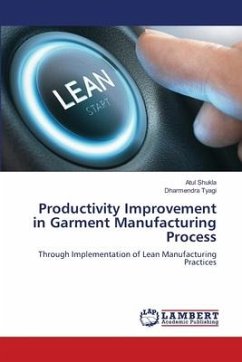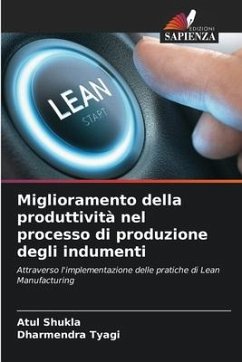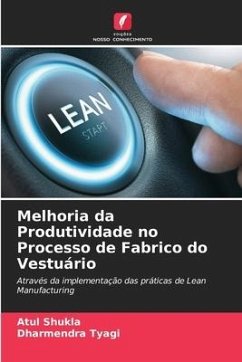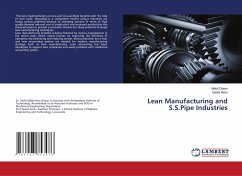
Productivity Improvement in Garment Manufacturing Process
Through Implementation of Lean Manufacturing Practices
Versandkostenfrei!
Versandfertig in 6-10 Tagen
29,99 €
inkl. MwSt.

PAYBACK Punkte
15 °P sammeln!
The purpose of this study is to discuss lean implementation and its quantified benefits for the textile industry. Both current and future state maps of the organization's shop floor scenarios are discussed using lean techniques in order to highlight improvement areas and to bridge the gap between the existing state and the future state of the shop floor of the textile industry. Traditionally operated garment industries are facing problems like low productivity, longer production lead time, high rework and rejection, poor line balancing, low flexibility of style changeover, etc. These problems ...
The purpose of this study is to discuss lean implementation and its quantified benefits for the textile industry. Both current and future state maps of the organization's shop floor scenarios are discussed using lean techniques in order to highlight improvement areas and to bridge the gap between the existing state and the future state of the shop floor of the textile industry. Traditionally operated garment industries are facing problems like low productivity, longer production lead time, high rework and rejection, poor line balancing, low flexibility of style changeover, etc. These problems were addressed in this study by the implementation of lean tools like cellular manufacturing, single-piece flow, work standardization, just-in-time production, etc. This study is conducted in the stitching section of a shirt manufacturing company. The study includes time studies, the conversion of traditional batch production into a single-piece flow, and long assembly lines into small work cells.












